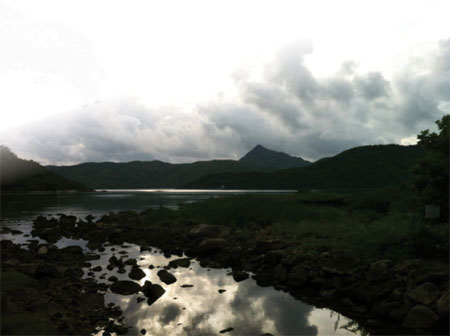Waves of destruction
Updated: 2012-09-04 06:57
(HK Edition)
|
|||||||||
|
Stormy weather over Hong Kong's New Territories ... but should we be preparing for more super typhoons triggered by global warming? |
Wanda may be one of the most remembered super typhoons to hit Hong Kong, but she was by no means the most destructive or deadly according to records dating back further into history.
Wanda's death tally of 183 pales by comparison to the two typhoons which struck in 1906 and 1937.
Records kept by Hong Kong Observatory show these two nameless typhoons resulted in some 15,000 and 11,000 lives being lost respectively.
As with Wanda, it was water - more specifically the storm surge - not winds which were responsible for the majority of deaths.
The typhoon on September 2, 1937 - often named the Great Typhoon - resulted in the sea level rising to 1.8 meters above the predicted high tide and a 9.1 meter high tidal wave which swept through the narrow channel flood low-level villages in Tai Po and Shatin.
Around 870 acres of farmland was flooded and 300 sea vessels wrecked. Wind speeds were so powerful that they broke the Hong Kong Observatory's wind measurement instruments which stopped at 240 kilometer per hour.
Wanda's arrival in Hong Kong on September 1, 1962, also coincided with a high tide which also exacerbated the flooding in the New Territories causing a dramatic tidal wave which swept into Tolo Harbour, this time drowning 70 people.
The Hong Kong Observatory says casualties were lower with Wanda partly because of the timing with the 1937 arriving during the night, catching people unprepared, while Wanda hit in daylight.
Likewise, the city also had much more effective warning system and disaster prevention and mitigation measures in place which have continued to improve up to the present day.
(HK Edition 09/04/2012 page4)
